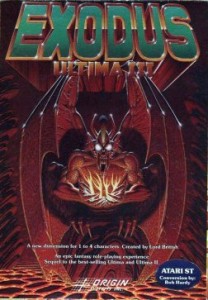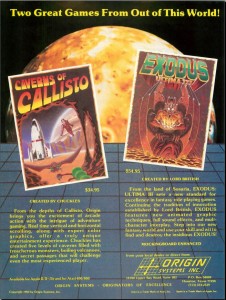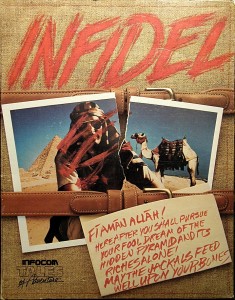
In his seminal book Hackers, Steven Levy compares the differing cultures of the East Coast hackers at MIT and the West Coast hackers at Stanford during the glory days of 1970s institutional computing by riffing on their literary preferences. The MIT folks, he claims, preferred “the battle-strewn imagery of shoot-’em-up science fiction,” while those at Stanford went in for “the gentle lore of elves, hobbits, and wizards.” He then goes on to describe how these preferences show up the differing cultures inside the institutions. MIT is competitive, practical, a bit traditionalist and perhaps even prudish, a microcosm of the high-strung East-Coast establishment; while Stanford, having imbibed from the remnants of the hippie dream that persisted in northern California into the 1980s, is more laid-back, more willing to dream about the social potential for computers outside the lab. Like most such clever but broad comparisons, it’s ridiculously reductive.
Yet it also may contain more than a few grains of truth. For all that they enjoyed riffing on the Zork milieu with its grues and its Flathead dynasty, amongst the early Implementors only Dave Lebling read much fantasy literature — and that was because Lebling, an omnivorous and voracious reader then as he remains now, read a lot of everything. If there was a consensus literary genre of choice amongst this group, it was science fiction. You can see this clearly by looking at the string of games Infocom released between the fall of 1982 and the summer of 1983. At this stage, with the company ramping up quickly but with a structured marketing department not yet in place to tell the Imps what kind of games they needed to make to fill in empty spaces in a matrix of genres, everyone just wrote the game he wanted to write. The result was that out of five games by five different authors three were science fiction.
Still, Infocom remained the house that Zork had built. To not continue that series, to ignore the fantasy genre that still remained (as it still does today) the preferred genre of the gaming public at large, would have been crazy. Having lived with the idea of an “original Zork trilogy” for so long, it can be surprising and even a bit counterintuitive for us to recognize that neither Infocom nor their customers saw Zork in that way when the original three games were being written and released. As far as they were concerned Zork was an open-ended series of numbered games of the sort that Ultima and Wizardry would become. Nowhere is that made clearer than in Zork III itself. Here Marc Blank, having incorporated bits of Zork I and Zork II into what stands today as the first of an eventual several brilliant Infocom time-travel puzzles, added an additional little Easter egg: a preview of the as-yet unwritten Zork IV in the form of a grisly episode in which the player gets sacrificed by an evil priest of some sort.
Thus, for all their high-brow write-ups in the New York Times Book Review and the pushes they had made into new literary genres and new styles of play, Infocom needed during 1983 to deliver another good old traditional Zork game — and one that incorporated, Mad Libs-style, Blank’s ugly sacrifice scene — even if it felt like something of a step back. Problem was, it wasn’t clear where to go next with Zork. It may not have been consciously designed as the climax of a trilogy, but Zork III did nevertheless have an air of finality about it. At its end the player had completed her existential journey by becoming the being she had spent all three games struggling against, the Dungeon Master. What could follow that?
The game that they eventually created is a testament to Infocom’s skill at balancing artistic credibility with commercial considerations. It began when Lebling, looking for a reason to get excited about a Zork IV, started thinking back to the ending of his previous Zork game, Zork II. There the player, after vanquishing her irritating nemesis the Wizard of Frobozz, could claim his magic wand and try a few spells for herself. It made a relatively tiny part of the game, and not a terribly deeply-implemented part at that, but it was just such an intrinsically cool idea; you just knew Lebling was onto something here that deserved further pursuit. Lebling, the only Implementor with any grounding in Dungeons and Dragons, now worked up an almost D&D-like magic system for Zork IV. Such adaptations from the world of tabletop RPGs were one of Lebling’s tics as a designer; he was, you may remember, also responsible for the little-loved randomized combat in Zork I.
Fortunately, the magic system he now created is much more fondly remembered. You carry a spell book containing a few beginning spells. Over the course of the game you can collect more spells on scrolls, most of which you can inscribe into your spell book, thus becoming an ever more flexible and formidable magic user. Prior to casting a spell you have to “memorize” it (or load it into your head like a piece of ammunition), just like in D&D. Once cast, a given spell is gone from memory until memorized again. And there is, of course, a limitation to the number of spells you can have in your memory at once.
All told, the magic system was an absolutely brilliant addition to an otherwise standard text-adventure template. Collecting spells and using them proved to just be fun as all get-out. Removing so many puzzles from the realm of the mechanical to that of the arcane even hid many of the implementational seams that usually showed through; when stuck, the player tended to spend her time casting her spells at various objects, a more manageable set of possibilities to deal with than having her try all sorts of crazy physical manipulations. Indeed, Lebling and his co-author, the indefatigable Marc Blank, quickly realized that seeing their spells fail was almost as much fun to players as using them to solve puzzles. Lebling and Blank therefore spent a lot of effort to make sure that, say, casting Nitfol (“converse with beasts in their own tongue”) on any creature in the game got you something appropriate — and usually entertaining — back in return.
At some point fairly early in the new game’s development Lebling and Blank decided that the addition of magic made it feel so qualitatively different from what had come before that releasing it as Zork IV just didn’t feel right. Further, in these heady days when they were being touted as pioneers of a new interactive literature, they were eager to live up to their billing, to demonstrate a certain eclecticism and literary integrity rather than just continuing to crank out the Zork games. They therefore made the brave decision to rename the game Enchanter, first of a new, open-ended series of fantasy games with an emphasis on spellcraft. (As with Zork, Infocom wouldn’t definitively decide this series should be a trilogy until much later.) Having declared their artistic independence, Infocom could then temper things a bit by declaring the new series to be “in the Zork tradition” and by including plenty of callbacks within the game to make it clear that, while this may have been a new series, it took place in the same beloved fantasy world. Thus they thought they could have their cake and eat it too — and in this they were partially if (as we shall see) perhaps not entirely correct.
As Enchanter begins an evil warlock by the name of Krill has been growing in power, and now threatens to conquer the entire world. The Circle of Enchanters was not initially sure how to respond. To send one of their own number to fight Krill would be “ill-omened,” for Krill would sense the intruder’s magical aura as soon as he entered his stronghold and send his minions to destroy him. Therefore, borrowing a plot element from The Lord of the Rings that would subsequently be used by a thousand CRPGs to explain just why your party of first-level nobodies are entrusted with saving the world, they have decided to send you, a “novice Enchanter with but a few simple spells in your book,” instead. They teleport you onto a deserted road close to Krill’s stronghold, and the game begins.
Enchanter‘s structure feels very old school when contrasted with the handful of Infocom games that preceded it. Not only is it a very traditional game, lacking the radical formal experimentation of the mysteries and Suspended, but it lacks even the initial narrative thrust of Starcross and Planetfall. Both of those games opened with a dynamic scene to get the plot wheels cranking and set up the non-linear exploration of the long middle. Enchanter, however, simply plops you down in an expansive world and tells you to get started with mapping, collecting objects and spells, and solving puzzles, just like Zork I.
Some of the first puzzles you encounter, before you even get into the castle, involve collecting food and drink. Like Planetfall, Enchanter is the product of a very brief era when Infocom was suddenly enamored with the idea of requiring the player to deal with these necessities. In fact, it’s even more stringent than Planetfall in this respect, implementing eating and drinking as two separate necessities in addition to the need for sleep. Hunger and sleep timers would soon become passé at Infocom (not to mention since Infocom’s era) as pointless annoyances that add little to the games into which they’re shoehorned. Yet, as in Planetfall, they don’t bother me greatly here, and even manage to feel somehow organic to the experience. When you sleep your dreams even deliver vital clues.
Once you get inside Krill’s stronghold you find a brilliant collection of interlocking puzzles that are challenging but solvable. Even better are little touches of wit and whimsy that abound everywhere, a sign of Dave Lebling really coming into his own as an author. Although Enchanter is credited as a joint production of Blank and Lebling, it feels like there is a lot more of the loquacious, playful Lebling than the terser, more stoic Blank here. Indeed, for being yet another struggle of Good vs. Ultimate Evil Enchanter has a remarkably light tone, with only a few discordant touches — most notably the sacrifice scene previously advertised in Zork III, which seems dropped in from another game entirely for the very good reason that it was — to remind you of the stakes. Let me tell you about a few bits that particularly delight me.
On the beach just outside the castle we meet the most prominent of a few animals in the game, a turtle, “his enamelled shell shining with all the colors of the rainbow.” When we dutifully cast Nitfol on him we learn how his shell got that way:
"How do you like my shell? A wizard did that to me about 75 years ago. It's nice to find a human who talks turtle. Not many do, you know. Most people think turtles are boring, just because we talk slowly."
Our new friend turns out to be a droll but helpful old fellow whom I find just about as charming as Planetfall‘s Floyd in yet vastly less space:
"Are you a magician? Are you going to do something about that annoying Warlock, then?"
The turtle is the centerpiece of a puzzle that is superficially similar to the one that required us to order a robot about in Zork II, the first Infocom game that allowed us to talk and give orders to others. This time it’s much more fun, however, because, well, it’s our turtle friend who’s helping us rather than a personality-deprived robot. We just need to speed him up before we get started, which we can accomplish with a touch of magic. When his task is finished:
The turtle drops a brittle scroll at your feet. "Not bad, huh?"
I’ve always loved this little guy, as has Lebling; he lists him as one of his favorite creations. The turtle and a few other creatures, all accessible to us thanks to the Nitfol spell, bring life to Enchanter, pulling it a million miles from the windy solitude of Zork III.
But the most remembered character of all in Enchanter is actually you — not the you who is playing the game now, but the you who dutifully marched through the three Zork games to get here. In one area of the castle we find a “Hall of Mirrors,” behind which lies a dim underground labyrinth. In it we occasionally catch a glimpse of “a bedraggled adventurer, carrying a brass lantern and an elvish sword, which is glowing dimly.” He is, of course, our old avatar from Zork. We can use our magic to summon him to the castle.
All at once, the bedraggled adventurer appears before you, brightly glowing sword in hand. His jaw has dropped and his eyes are bulging. His eyes dart this way and that, as if looking for a way to escape.
The game then proceeds to mercilessly but affectionately lampoon this rather dim fellow, along with the old-school design tropes he represents. By far his biggest interest is in collecting valuable objects to put in the trophy case he presumably has back in his white house:
The adventurer offers to relieve you of some of your possessions.
The adventurer asks what you would be needing treasures for.
The adventurer, not overly tactful, asks what you're holding.
In effect we’re seeing the adventurer as the troll, the thief, and their buddies in Zork I must have seen him (us?). He wanders about snarfing every object that isn’t nailed down, fiddling constantly with a weird map (“a convoluted collection of lines, arrows, and boxes”), and serving as an extended in-joke to anyone who spent any time with the Zork games.
The adventurer tries to make some small talk, but only mumbles. He'll have to speak up if he expects you to hear him.
The adventurer waves his sword menacingly in your direction.
The adventurer stares at his possessions as if expecting a revelation.
The adventurer seems to have dropped out of existence. In a voice that seems to recede into the void, you hear his final word: "Restore...." You muse about how a mere adventurer might come to possess a spell of such power.
The adventurer smiles at you like an idiot.
The adventurer asks for directions to Flood Control Dam #3.
The adventurer stops and stares at the portraits. "I've met him!" he gasps, pointing at the Wizard of Frobozz. He doesn't appear eager to meet him again, though. "And there's old Flathead! What a sight!" He glances at the other portraits briefly and then re-checks his map.
The adventurer waves at you and asks "Hello, Sailor?" Strange, you've never even been to sea.
In the spirit of shoe-on-the-other-foot, he also proves annoying in the way many of the non-player characters within the Zork games were, scattering objects hither and yon so you never know just where anything is.
At the risk of ruining a great joke by making of it grist for some theoretical mill, it’s remarkable that Infocom is already playing with the clichés and expectations of the adventure-game form so early, just six years after Adventure itself. This sort of knowing self-referentiality is a very modern phenomenon, one that appeared only after decades or centuries in other art forms. It’s the sort of thing I want to point to when I say that Infocom was more knowing, more sophisticated — just a little bit smarter — about what they were doing than their peers. And yet Infocom is doing it from within what is ultimately a very old-school design of its own, a perfect example of their talent for giving the people what they want, but doing it with a grace and style that eluded most of their competitors.
Enchanter would make an ideal case study in gated puzzle design. Its wide-open map conceals several intricate chains of puzzle dependencies that give the game a structure that Zork, with its mostly unrelated puzzles strewn randomly about its geography, lacked. The adventurer, annoying as he can be, is also a critical link in one of these chains. He gives us our key for solving the “maze.”
A certain fascination with pseudo-mazes is another of Lebling’s design tics, one which he also passed to Steve Meretzky. He claims to have lost interest in the standard approach to mazes even before his friends at MIT added a couple of monstrously cruel examples of the form to the original PDP-10 Zork. What he delighted in instead was to give us areas that seem to be mazes, but which have some trick — other than the tried-and-true dropping of objects and plotting connections, that is — to solving them. His first pseudo-maze, the baseball puzzle in Zork II, misfired horribly. His second attempt in Starcross was much more reasonable, a labyrinth that could be solved only by convincing someone else to guide you. His third attempt is here in Enchanter in the form of the “Translucent Rooms,” and it’s even more clever. I’m going to spoil here its concept, although not the mechanics of its solution, as an illustration of the marvelous and varied puzzle design inside Enchanter.
So, with the adventurer’s aid we come upon a map which we quickly realize shows the Translucent Rooms.
The map consists of a drawing with nine points, each represented by a strange character, with interconnecting thin pencil lines. Using your native alphabet, it looks like this:
B J
! / \
! / \
! / \
! K V
! / \
! / \
! / \
R-------M F
\ /
\ /
\ /
H P
We also find a magic pencil, using which we can draw in new connections between rooms and also erase them. When we do so, the connections appear not only on the (paper) map but also within the real-life maze. The catch, however — there’s always a catch — is that we have enough lead left to draw just two lines, and enough eraser left to erase just two. That shouldn’t be any problem, right? As you’ve probably guessed, the currently inaccessible room at P contains the item — a powerful spell we can use to banish Krill to “another plane of existence” — that is the point of this whole exercise. Unfortunately, it also contains a powerful entity of eternal Evil who makes old Krill look like a pussycat in comparison. We glean from a book found elsewhere in the game that he was banished there many centuries ago by our magic-using ancestors to save the world (evidently this world of ours tends to need a lot of saving). As soon as we give the entity an escape route to the exit, room B on the map, he’ll start moving toward it. When he’s in a room with us, meanwhile, we’re too terrified to do anything at all. So, the puzzle is to lure the entity out of room P, but to shut off his escape route before he gets all the way out while ourselves getting into room P and then out of the maze — all without using more than two pencil strokes and two erases.
Even in 1983, when adventure-game engines from other companies were beginning to make technological strides, Infocom was the only company who could have made such an intricate, dynamic puzzle with the associated necessity for a parser capable of understanding the likes of “draw line from H to P.” I’ve made this point before, but it’s worth stating again that Infocom’s parser was not just a wonderful luxury; it enabled better puzzles, better game design. This puzzle is a good example of the sort found throughout the game, being fair, challenging but not exasperating, and built with some intricate programming that, like all the best intricate programming, is likely to go completely unremarked by the player; it just works.
Lest I be accused of overpraising, let me also note here that Enchanter is a product of 1983, and does show some signs of its age. In addition to hunger, thirst, and sleep timers (the first of which gives a hard limit to the time you can spend in the game, since there is only so much food to eat), there is an inventory limit. And there’s a fair amount of learning by death. Whatever you do, don’t get the bright (ha!) idea of casting the Frotz spell on yourself so as to have a constant source of light; since there is no way to extinguish this spell and since one puzzle is dependent on darkness, you’ll lock yourself out of victory thereby. Worse, you’ll probably have no idea why you can’t proceed, and when you finally break down and turn to the hints will throw the game against the (metaphorical) wall and hate it forever. The big climax is another offender in this department, although one less likely to force you to replay large swathes of the game. You have only seconds to defeat Krill and the minions he throws at you, and no idea which spells you need to have memorized to do so without dying a few times to gather that information. But other than its past-lives issues in this and a few other places, Enchanter plays very fair. Just remember, as a wise man once said, to save early and often.
It’s probably safe to say that Infocom’s decision to make Enchanter its own thing had commercial consequences. It sold reasonably well, but lagged behind the older Zork games. Released in September of 1983, it sold just over 19,000 copies before the end of that year, followed by a little over 31,000 copies the following year. Enchanter did prove to have longer legs than many older Infocom titles in the company’s later years. All told, it sold over 75,000 copies as a standalone game or as a part of the Enchanter Trilogy bundle. Today it stands as one of the more fondly remembered of Infocom’s games, with more than its fair share of appearances on favorites lists, and has served as the template for some well-regarded games of more modern vintage. Its individual spells, meanwhile, have taken on a life of their own within modern IF circles, being used as the names of interpreters and various other programs and bits of technology — not to mention the name of the domain on which you’re reading this. As my choice of domains may indicate, Enchanter is in my personal top five or so of Infocom games, the first I’ve come to on this blog about which I can say that. Unlike my other favorites, which tend to push the envelope of what a text adventure can be in one way or another, Enchanter stands for me almost as a platonic ideal of an old-school, traditional adventure game, executed with thoroughgoing charm and craftsmanship. I love it dearly.















